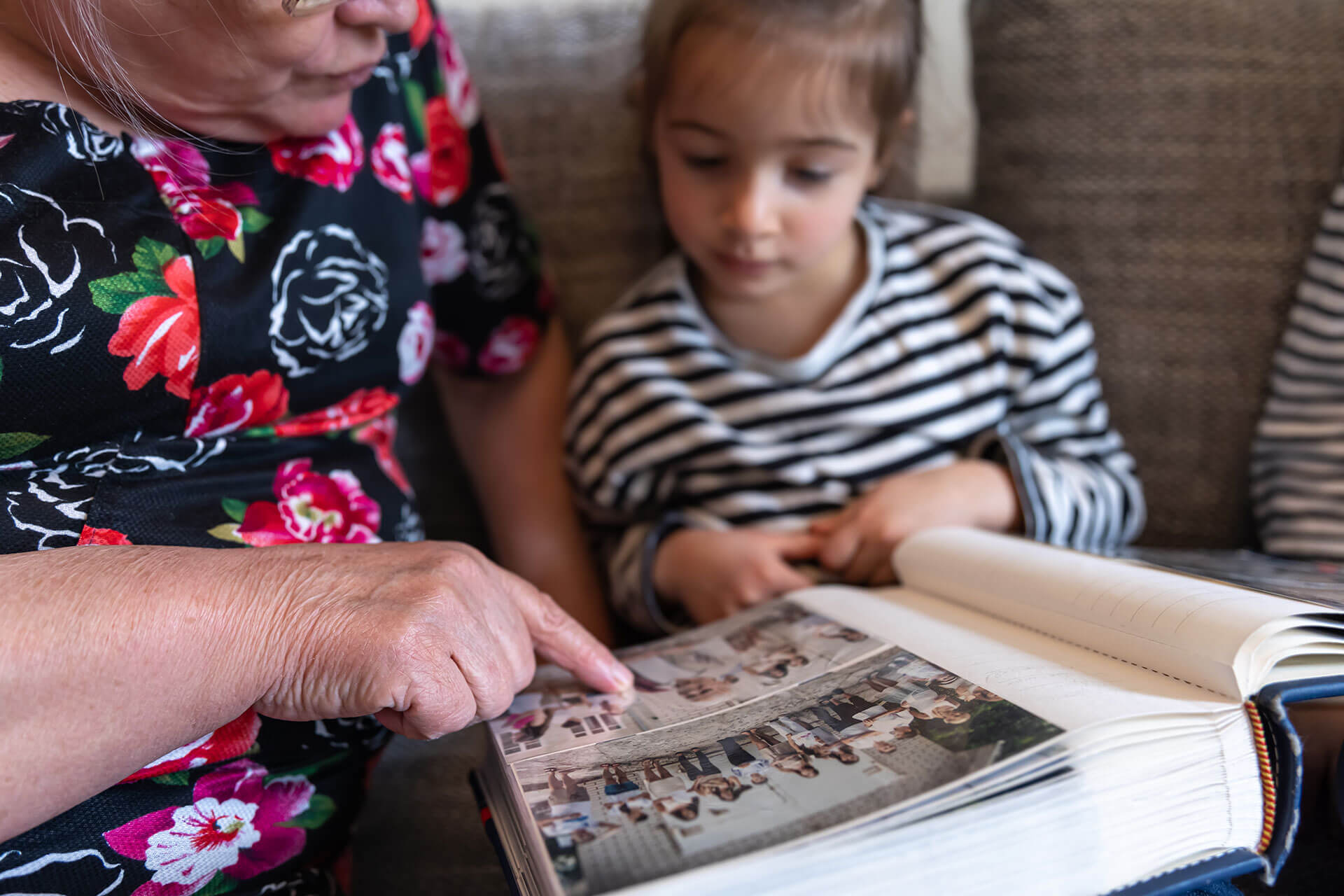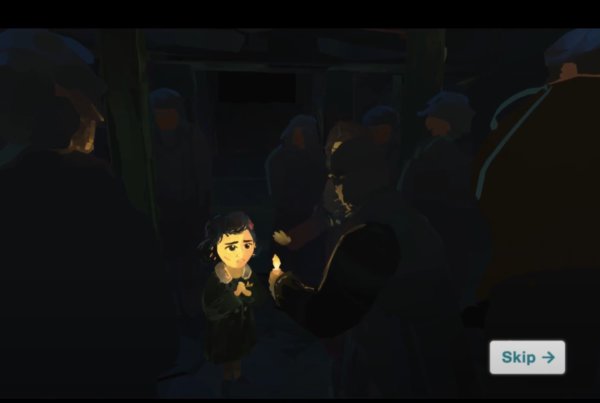
7 Tips For How to Tell if your Family History is Accurate
Sometimes family members tell stories in a different way than you remember them when they give their thoughts on your shared family history. As is often the case, we all have different perspectives, and the further in the past something gets, the more likely it is for details to get murky.
Before you jump to conclusions and condemn your loved one for twisting the truth within their conversational, interactive video, it is important to explore how fact and fiction works when we tell our stories.
It is important to explore how fact and fiction works when we tell our stories. Learn tips for how to tell if your family history is accurate here.
Being Honest with Ourselves in Remembering Our Family Stories
The 1950 Japanese film Rashomon is considered one of the greatest films ever made. The story follows four different people, each of whom describe a murder from different perspectives. All of them were eyewitnesses to the event, but each tells a different version of the experience.
Were they lying, or could they all have been telling a version of the truth?
The film addresses how difficult it is to discern fact from fiction within the stories we tell. In the movie, one of the characters states that the problem with separating fact from fiction is,”most of the time we can’t even be honest with ourselves.” This reality check is important. Before we begin to think about what our family shares when they retell family stories, it is a good idea to check our own story first. When we are asking others to be honest with us, ensuring we have our own story straight is a good place to start.
This is a very common question: is my ancestry accurate?
Listen First From The Perspective of The Storyteller
It may be the case that someone in your family has a version of the family history that you do not agree with. In such instances when you see a glaring error it is easy to jump to conclusions about the intentions of the storyteller. But before you do so, it is worth taking a step back and seeing whether there is more you can learn from their story by listening to their historical narrative in a different way.
One option is to listen from the perspective of the storyteller themselves to see if you have missed something about their perspective or intent. Maybe the family member feels hurt or embarrassed by something and is trying to avoid the truth of the situation or save face. Maybe there is more to the story than meets the eye. Maybe the version you’ve heard of the story has been changed through the “game of telephone.” Maybe they are trying to convey something about themselves that you had not heard or realized before. Maybe they are trying to protect someone else. Try to be compassionate and empathize with their side of the family story. You are likely to find out more than you first imagined.
When navigating fact and fiction, consider the following:
What To Consider When Deciding If Your Family History Is Accurate
When navigating fact and fiction regarding your family history, consider the following ideas:
1. Factual Information
Some things can easily be established as being true or false because they contain hard and fast informational data, such as dates, times, people, and places. Factual content is typically found in the 4 W’s: what, when, where, who. For example, Sally’s wedding (what) was on June 1st, 1985 (when) in the Catskill Mountains (where) and over 150 family and friends traveled there for her big day (who).
The fact that Sally got married, and that she did so on June 1st does not vary, nor does the place she got married, nor the people who were on the guest list. Such points of information are very memorable and verifiable. Of course, after 40 years it is entirely possible to forget the year momentarily – was it 1984 or 1985? Usually such errors happen because of a slip of the mind. In most cases you can assume that a genuine attempt is being made to reflect the facts.
2. Storytelling
When you or a loved one re-tell your stories, you often add descriptions, opinions and emphasis. The story not only contains facts but also the perspective of the storyteller. Going back to the previous example, Sally (the bride) will have a different view of the wedding day than her husband John (the groom). The story is not only shaped by who tells it, but also when it is told. Sally will tell the story of her wedding day differently on her first anniversary than on her 35th anniversary. Time changes how we tell our stories, even when basic factual information remains the same.
Sally’s recounting the story of her wedding day is not just factual, though. She might include in her story the fact that she chose June 1st as her wedding day because it was her late grandmother’s birthday. She might also add that she hoped she would be looking down from heaven, creating an emotional connection with the memory of her deceased grandmother. She might also tell you that she borrowed her uncle Bob’s limousine, even though he was a funeral director, introducing some humor.
She may also recount that she was the fourth woman in her family to wear the same silk wedding dress that was first tailored in 1890 for her great-grandmother’s wedding. She might also add, with some sorrow, that she would be the last to wear that dress because it rained so heavily on her wedding day that the dress got ruined. To redeem the situation she might also share that she had an identical copy made for her own daughter’s wedding in 2018. Through the story, we learn what made Sally’s wedding unique and special to her.
3. Bending the Truth
Even though you may make your best efforts to recall the past accurately, it is in the nature of memory to bend the truth in different ways. This is not lying in a malicious way, but more a creative embellishment which feels truthful, even if it is not entirely accurate. For example, if in fact the dress was first tailored in 1892, or Uncle Bob did not use his hearse to bring her to the wedding, or the downpour was more of a light summer shower it would not change the meaning and intent behind the story.
4. Reframing or Lying about the Past
It happens. People lie. And there is always a reason for it. That does not mean it is a good reason, but there is always something behind the need to change the truth. Those reasons are can include:
- A need to close a painful chapter
- A desire to attribute blame
- A desire to create a different outcome in the present based on a falsified account of the past
- A need to avoid shame
- An attempt to establish a stronger power base in the family.
The list goes on and on, but all that really matters is the motive of the storyteller.
Tips For Dealing With Inaccurate Family Stories
How do you respond to a story that is not true? If it is merely a mistaken or mis-spoken piece of information, there is no harm in letting your loved one gently know that you noticed they had the wrong date, name, or place. They will likely be glad you brought it to their attention and will make the correction the next time they tell the story.
If the errant topic being discussed is of a hurtful nature, it is best to find a time to discuss it away from the heat of the moment. Don’t raise the topic over Thanksgiving dinner, for example. If someone is lying about the past, they may become defensive. On the other hand, if you find a time to lovingly discuss the issue in a private setting, you might be surprised how open your family member can be when approached thoughtfully and tactfully.
Remember, it is natural that memories change over time. Assume good intentions and you will likely learn a lot.
Here are some tips to remember if you ever need to discuss a story’s inaccurate information with a loved one:
- Trust the storyteller. You may have differences of opinion with the interviewee about key details, but if you assume they are telling their version of the truth you may learn something from it.
- Ask clarifying questions.
- Don’t make judgemental statements.
- Be supportive, even if the things that have been said feel hurtful.
- Keep an open mind; new information may emerge that you did not previously know.
- Don’t let the way someone who represents your past change who you are in the present.
- Create the opportunity to discuss the past in a positive way.
Remember that we all have unique perspectives, and the ties that bind families together are built with love, mutual respect, and shared experiences. The more you are willing to see things from someone else’s perspective, the stronger your bond with them may become.
Remember these tips while dealing with potentially inaccurate family history being shared via StoryFile Life conversational videos.





